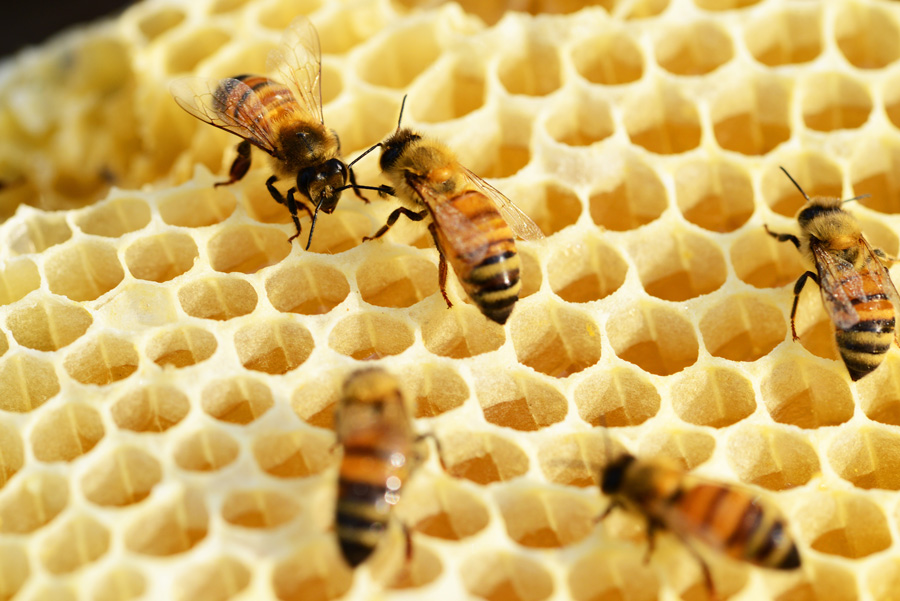When checking for toxins in water and food, Sunita Narain and her colleagues at the Center for Science and Environment (CSE), decided to run a test on honey. They were shocked to find out that honey sheltered staggering levels of antibiotics.
When we regularly eat food and drink water containing leftovers of antibiotics after they were used in agriculture, the bacteria in our bodies get accustomed to them, mutate and eventually become resistant to treatment. Currently, about 33000 people die each year as a direct consequence of antimicrobial resistance.
“And how scarier can it get if we lose the ability to treat infections and diseases?” said Sunita Narain at the World Water Week 2019 during an event on antimicrobial resistance, AMR co-hosted by SIANI, Swedish Water House, Sida, Nordea and UNDP.
Sunita and her colleagues investigated why and how antibiotics ended up in the honey. It appeared that beekeepers were diffusing antibiotics in the sugar syrup they fed to bees, doing it for growth promotion and higher productivity. Antibiotics were also used to keep the bees healthy. The beekeepers mostly work with bee species brought from Europe, which aren’t adapted to the Indian climate and natural conditions and highly susceptible to disease.
This discovery received a lot of public attention in India, many people even stopped eating honey. Eventually, the Indian government had to introduce the standards to limit the use of antibiotics in bee-keeping. Since then, the situation has significantly improved, thanks to CSE’s science-based advocacy which fuelled public awareness and consumer pressure, triggering the changed.
However, many farmers around the globe, in rich and poor countries alike, continue to routinely use antibiotics with little monitoring and regulation. In fact, livestock production uses more antibiotics than human healthcare, according to Ulf Magnusson, Professor of Animal Reproduction at SLU. Much of his work has been focusing on promoting antibiotic-free livestock farming, focusing on diseases prevention, high hygiene and animal welfare standards. This method that has proven to be effective in Sweden, where on-farm use of antibiotics for prophylactics and growth promotion was banned in 1986.
“We will never be able to clean all the antibiotics up, so we need to push the preventive agenda in all the industries,” said Sunita Narain. However, according to her, the roots of antimicrobial resistance are not in the use of antibiotics per se, but in the fact that our food production is wired for constant growth, expansion and unification.
Moreover, although least researched and understood, the food pathway is not the only way we get in contact with antibiotics. A fair share of the comes with wastewater from pharmaceutical production and from healthcare facilities. On top of that, thanks to global interconnectivity resistant bacteria easily travel across borders. The outbreaks of diseases caused by bacteria resistant to antibiotics were recorded all over the world from the US and UK to Pakistan and Indonesia.
That is why AMR is a systemic problem and should be approached through holistic solutions, like the One Health approach, which works with human and environmental health through multi-stakeholder collaboration and communication. The case of AMR, for instance, requires joint action from the pharmaceutical industry, agriculture and healthcare, as well as a major public awareness effort and governance integration on national and international levels.
Positive developments underway
A group of pharmaceutical companies united under the AMR Industry Alliance have been working on a common framework for the discharge of antibiotics, establishing science-based risk-driven targets for the concentration of antibiotics in the waste discharged from pharmaceutical production. “Even though only 40% of the companies have signed up for it, this standard is the first step. Ultimately, we will need to have an international standard and increase supply chain transparency,” said Alba Tiley who is leading the Sustainable Antibiotics program at Centrient Pharmaceuticals.
World Water Week 2019 has also seen the launch of the Reducing Emissions from Antibiotic Production (REAP) initiative, which is set up to promote sustainable production of antibiotics through innovation, regulation, market incentives and leadership.
Healthcare professionals can play a huge role in the reduction of antimicrobial resistance. High quality of water, sanitation and hygiene standards in the healthcare facilities can go a long way: “In many places around the world women are prescribed prophylactic antibiotics after giving birth and to reduce neonatal mortality, this is simply because doctors know they can’t guarantee clean conditions. Improving water, sanitation and hygiene can reduce this problem by 60%,” said Maria Neira, Director of the Department of Public Health, Environmental and Social Determinants of Health at the World Health Organization.
WHO admits that the progress on tackling this looming catastrophe has been slow. The major reasons are inadequate national monitoring and reporting, as well as the lack of recognition and joint action from all the different stakeholders.
Indeed, in most of the countries, the ministries of health and agriculture operate separately and have little overlap and integration. However, in 2016 the WHO, Food and Agriculture Organization (FAO) and the World Organization for Animal Health (OIE) created a manual for developing national plans for antimicrobial resistance. This manual implies collaboration between the institutions concerned with the plant, animal and human health, as well as those working with food safety, environment and agriculture and is designed with One Health approach in mind. Additionally, WHO’s Global Action Plan on Antimicrobial Resistance provides a comprehensive framework for combatting AMR with recommendations for different stakeholders.
What can you do?
High-level policy, farming and pharmaceutical industry may be a faraway world, but you can take personal actions to protect your and global health, as recommended by the WHO:
- Only use antibiotics when prescribed by a certified healthcare professional
- Always take the full prescription
- Never use leftover antibiotics
- Never share antibiotics with others
- Keep your vaccinations up-to-date
- Wash your hands regularly
- Talk to others and share information about the spread of AMR and ways to stop it
